Road traffic safety for dummies: the world’s first average female crash test dummy
Crash test dummies are used extensively in the development of safety features for cars and other vehicles. However, global regulations only require these features to be tested with average male dummies. Professor Astrid Linder, a road traffic safety expert based at the Swedish National Road and Transport Research Institute, Chalmers University of Technology in Sweden and Monash University in Australia, has worked with a team of researchers to develop the world’s first average female crash test dummy to ensure that new vehicles are designed to protect both male and female users alike.
Talk like a road traffic safety expert
Component test — in vehicle development and evaluation, the assessment of individual components and systems found within vehicles
Crash test dummy — a life-sized model of a person used to assess how the body is affected by vehicle collisions
Open-source — in software, when the original code is freely available to be used and modified
Road traffic safety — the methods and measures used to minimise the loss of life and health in road systems
Whiplash injury — a soft-tissue neck injury caused by the sudden movement of the head relative to the torso, seen most often in car accidents
Crash test dummies simulate the human body and how it is affected in vehicle crashes. They are a critical part of the development process for new vehicles, and help to ensure the safety of a vehicle’s occupants. “Car manufacturers use crash test dummies to assess safety,” says Professor Astrid Linder from the Swedish National Road and Transport Research Institute, Chalmers University of Technology and Monash University. “The aim is to create vehicles that protect their occupants and other road users from being injured or killed in the event of a crash.” Such tests are required by international law as part of a bare minimum safety requirement that vehicles have to pass. “Vehicles may also undergo additional consumer tests that go beyond these minimum requirements,” says Astrid. “Organisations use these further tests to provide ‘star’ ratings that indicate the level of safety the vehicle provides.”
However, crash test dummies are modelled on the average male body, and although many aspects of male and female bodies are similar, there are some fundamental differences. For example, males and females have different muscle strengths and body shapes, particularly around the torso and hips. This means that safety tests may overlook some of the ways in which females are affected during a crash. “Injury statistics show us that females are not as well protected as males in certain types of crashes and for certain injuries,” says Astrid. “To establish how and why females are impacted in these ways, we needed to create models that we could use in testing.”
The origins of the first average female crash test dummy
Average male crash test dummies have been around for many decades, so the process for their development is well-established. However, one dummy cannot be used in all scenarios. “The human body is highly complex, and dummies are only made of metal, rubber and plastic!” explains Astrid. “This means we need to make models for different impact directions – if the crash comes from the front, rear or side – as well as for different severity levels and different types of injuries.”
Astrid began working with crash test dummies back in the 1990s as a PhD student for a project that made the world’s first dummy for low-severity rear impacts. “Our model was based on the average male because that was what we had access to,” says Astrid. “For me, the logical next step was to do the same for the average female, since injury statistics from the late 1960s and onwards showed that females were less well protected from whiplash injuries than males.” This began Astrid’s work into average female dummies, using data on body shape, proportions and muscle strength to build prototypes. “Of course, we didn’t get there straight away,” she says. “It was an iterative process that required a lot of learning and research over many years.”
Investigating whiplash injuries
Astrid is studying how the risk of whiplash injuries can be reduced in the event of a crash. Whiplash injuries are injuries to the soft tissues of the neck and can cause long term consequences. “These injuries occur at lower velocities in all impact directions, but are most commonly a result of rear impacts, where the seat has the biggest potential to offer protection,” explains Astrid. “For the evaluation of the seat, we can conduct component tests.” This means the team only uses the relevant parts of the car in their test: in this instance, the car seat. “We put the seat and the crash test dummy on a sled, and then subject the sled to impacts at different severities to test how well the seat protects the occupant from injuries,” she says.
Astrid’s team uses both average male and average female dummies, the recently developed Seat Evaluation Tool (SET) 50F and SET 50M, in these tests. “Our results, which we are in the process of publishing, indicate that the average male and the average female respond differently,” she says. “This has important implications for how to assess seat design to provide maximum safety for everyone.” Average female models are not used in any standardised testing, but this could change in the near future, providing important information for consumers about seat safety in different vehicles.
Overcoming regulatory road blocks
Research like Astrid’s, coupled with good common sense, makes it clear that average female crash test dummies should be used as a matter of course – so why aren’t they? “It’s a very common question that people ask,” says Astrid. “The answer is that no-one has done the work and put in the effort at the regulatory level.” Global safety rules dictate that a model of an average male should be used, so doing something different is not an option. “Until society demands that this changes, things will stay the same,” says Astrid.
Astrid is helping lead the charge to make these demands. “My current focus is publishing our research and being present in the groups where possible regulatory changes are discussed,” she says. “The models now exist – it is just a matter of using them.” Alongside physical tests, Astrid also believes that computer simulations should begin to play a bigger role. “We are about to finalise a virtual model of the SET dummies,” she says. “Our data is all open-source: we want to share this knowledge and foster its future development.”
Astrid’s pioneering work has not gone unnoticed: she was named on the BBC’s ‘100 most inspiring women’ list in 2023, and the Forbes Global 50 Over 50 list in 2025. While female crash test dummies are yet to become the norm, she is hopeful that this may soon change. “I think it’s reasonable that by 2030 the safety of new cars should be assessed for both females and males equally,” she says. “I hope that our average female model will provide the foundation for this.
 Professor Astrid Linder
Professor Astrid Linder
Professor of Road Traffic Safety, Swedish National Road and Transport Research Institute
Adjunct Professor, Chalmers University of Technology, Sweden
Adjunct Professor (Research), Monash University, Australia
Fields of research: Road traffic safety, injury prevention, physics, engineering
Research project: Developing the world’s first average female crash test dummy
Funders: The average female crash test dummy was developed as part of the Open Access Virtual Testing Protocols for Enhanced Road User Safety (VIRTUAL) project that received funding from the European Union Horizon 2020 Research and Innovation Programme under Grant Agreement No. 768960.
Reference
https://doi.org/10.33424/FUTURUM630
The average female body is different to the average male body, as seen in the comparison of the SET 50F female crash test dummy (left) and the SET 50M male crash test dummy (right).
© VTI/Magnus Karemyr
The spine and inner structure of the torso of the SET 50F.
© VTI/Magnus Karemyr
Astrid’s female crash test dummy, SET 50F, sits on a car seat on a crash test sled for a component test. © VTI/Philip Sorri
© VTI/ Phillip Sorri
© VTI/Hejdlösa Bilder
About road traffic safety research
Road traffic safety research involves studying how to keep people safe on the roads. Globally, around 1.2 million people die each year as a result of road traffic crashes, and the United Nations General Assembly has a target of halving this figure by 2030. In addition, 20-50 million people are severely injured on roads every year. Research avenues in this field are varied: they may involve testing the safety of new and current vehicles in different scenarios, designing and improving road systems to prioritise safety, or investigating social factors related to traffic safety, such as alcohol use or road rage.
For Astrid, the numbers give her motivation. “Injury data and statistics are my ‘fixed point in the universe’,” she says. “They show me that what I am doing is important. This gives me a goal to strive for.” Persistence is key: the rate of progress in this area has been slow, despite extensive data showing the need for average female crash test dummies. “It has taken a long time to get the funding,” says Astrid. “This surprises me because, from an engineering perspective, it couldn’t be more obvious that female crash test dummies are needed.” Engineers design products with a specific target audience in mind, and given that around half of vehicle users are female, it makes little sense that half of the population are excluded from the safety tests!
Astrid is passionate about getting more people involved in road traffic safety research. “This is how we make our world and our society better,” she says. “Students bring new perspectives and new innovations – sometimes the solutions are right in front of us.” Naturally, the field involves a high degree of collaboration. “It’s like building a rocket: it’s hard to do it by yourself in your backyard,” she says. “Learning how to work together is essential: every brain is different, and having different perspectives is always positive.” She recommends beginning to develop teamwork skills as soon as possible, including through projects in the classroom.
Pathway from school to road traffic safety research
Research like Astrid’s involves both knowledge-based and technical skills, meaning that both academic and vocational training can provide pathways into a road traffic safety research career. At school, useful subjects may include physics, mathematics and product design.
At university, courses in engineering, physics and design may all provide routes to a career in the field. Vocational pathways include college courses and apprenticeships that build skills in mechanics, technical work, and manufacturing processes and testing. “Do whatever best stimulates your curiosity – that is what will prepare you best,” says Astrid.
Chalmers University of Technology in Sweden, where Astrid is an Adjunct Professor, has a number of STEM outreach programmes for school students, including study visits, talks, festivals, open lectures and a Girls Code Club summer bootcamp.
Explore careers in road traffic safety research
Astrid notes that many researchers are happy to hear from students at any stage of their education, including high school. “Find people that work in the topic you are interested in and reach out,” she says. “Make sure it’s a two-way process: have specific questions in mind, based around your interests.” This can help build your understanding of what it is like to work in the area, as well as beginning to build your network.
Read some of the articles in Traffic Safety Research, a journal dedicated to the field, to learn more about research in this area.
The International Research Council on the Biomechanics of Injury hosts an international conference every year. You can explore the research that is discussed here.
Internships can be a great way to get hands-on experience in the field. For example, the Institute for Road Safety in the Netherlands offers up to 15 internships each year.
Explore the OpenVT website where you can access Astrid’s data on the SET 50F and SET 50M along with other data on different models and tests.
Meet Astrid
As a teenager, I was really into practical skills, so I qualified as a technician. It was only after working for some years that I discovered my passion for mathematics and physics. I started university when I was 29, and really enjoyed it, especially mathematics. I didn’t have my path figured out, so I followed my passion.
Working at a research institute means I can study whatever I am interested in, as long as I can secure funding for the research. This involves identifying what is needed in society, and then finding collaborators to help me study it. Often, if I really want to do something, it involves taking on the tasks that no-one else wants to do – which in my case involves being project manager and coordinator. I am always happy to let someone else take the reins, but I am equally happy to do it myself to make the project a success.
People designed the road transport system. This means that people can redesign it to make it safer. When the day comes that crashes no longer result in injury or death, I’ll be happy to move on to something else. But until then, there is work to do – by me and by future generations.
Having a passion for what I do definitely helps the quality of my work. I am committed and sometimes stubborn – but I try not to be stupidly stubborn! When things get hard, I’m happy to ask for help or support. I never have all the answers – nobody does.
I’m fortunate to also have a rich life outside of work. I have a son and grandchildren who I love spending time with. I’m an outdoor person, spending time trekking or building sea kayaks to take out on the ocean. Earlier this year I made it to Everest Base Camp, which was a demanding, fantastic experience!
Astrid’s top tip
Keep your curiosity alive. There are endless things to be curious about in the world: our ability to be fascinated by the world is humanity’s superpower. My four-year-old grandchild is fascinated by everything, and rightly so! It’s built in, but you have to make sure to foster that curiosity throughout your whole life.
Do you have a question for Astrid?
Write it in the comments box below and they will get back to you. (Remember, researchers are very busy people, so you may have to wait a few days.)

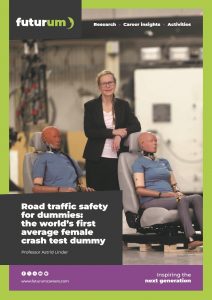
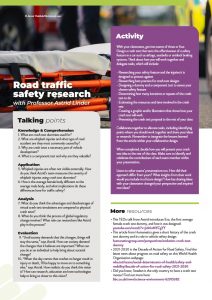
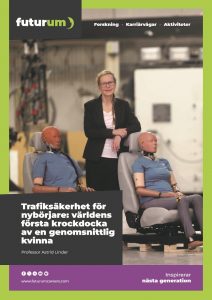
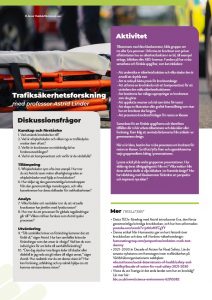




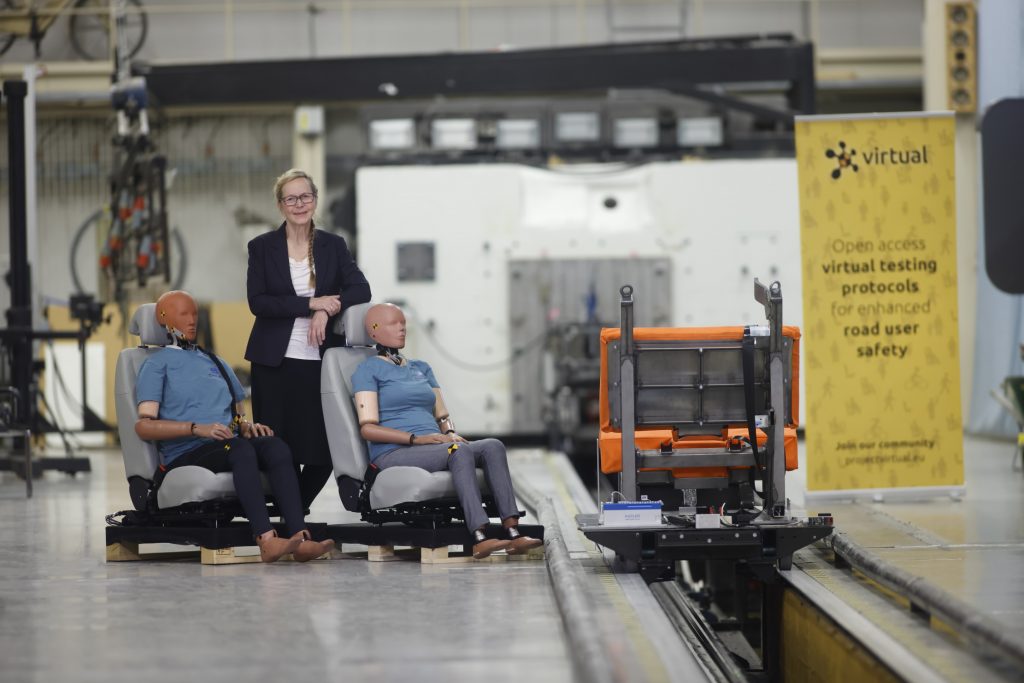
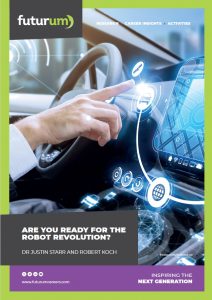
I find it extremely in-just that cars were designed around men full stop. I think that in this day and age we should have an entire car that is bespoke made for women. From the seat belt design to the entire layout internally, i have been saying this for years now. I would definitely buy one. Do you know of anyone who is looking into pursuing this moving forward and if so would you like to be a part of the project?